harvest mouse
This is the smallest mammal in Europe, and they are agile climbers, using there long tail near the tip of a stalk of long grasses: Here the tail is prehensile and serves as an additional limb, which it wraps around any suitable object within reach. This way they can use there front feet for extra stability while feeding. They feed upon cerail and corn, but also insects and snails.
harvest mouse surviving the winter
Wintertime is a real problem: then they feed on moss, roots and fungi.
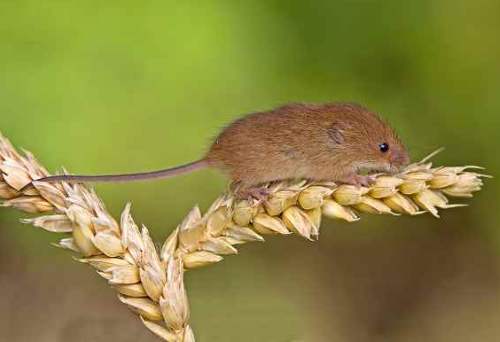
A harvest mose on tritium, a cerail.
With thanks to Robert-Bannister
the harvest mouse is small
This mammal isn't much larger then insects. Loosing warmth is there biggest problem, it has to burn a lot of food to keep warm. A harvest mouse eats on third of there weight daily to feed.
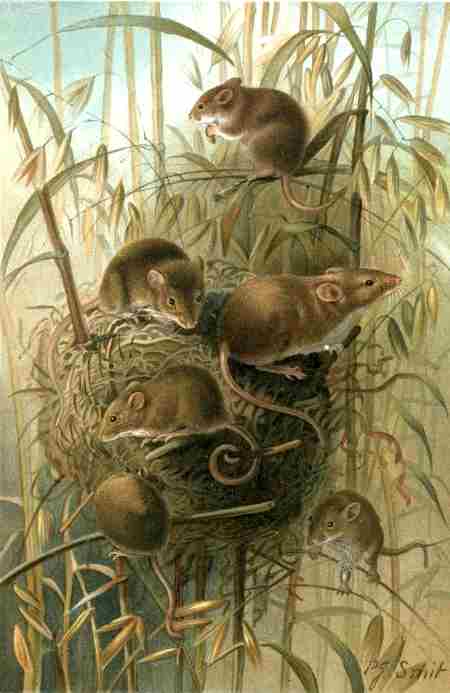
The harvest mice build there nests about half a meter above the ground. They build theire nests like birds, only they put an opening in the side so they can peek out. This illustration was made by Lydekker.
harvest mouse reduplication
The reduplication rate is very fast and stops only during winter times. Several litters a year of 2 - 8 young. These young weight less then a gram after bird and are capable to feed themself after two weeks. Most adult mice don't survive the winter.
harvest mouse today
Nowadays the corn and grainfields give little
food for the harvest mouse as all the grain ripens
in the same period.
This is the most imporant reason for the strong decline of the harvest mouse.
In the middle ages the little mice were an important
reason of harvest damage.
harvest mouse distribution
Harvest mice can be found in europe and asia, including the Japanese archipel.
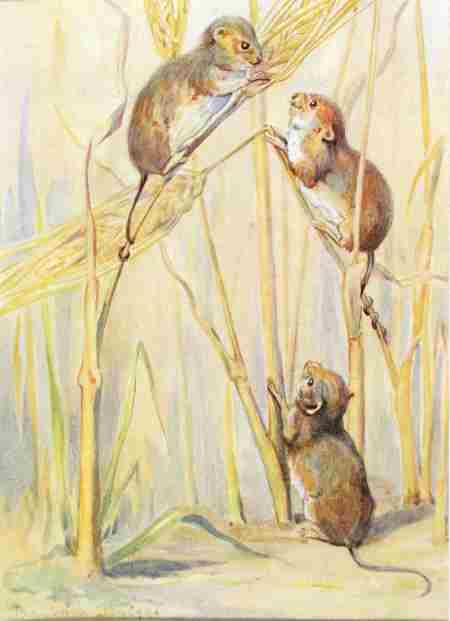
Harvest mouse work together to get there food. One of the mouses will watch for birds, there most important predators. This ios an ilustration from "Friends of Field and Forest" (Eleanor E Helme), illustration made by Barbara Briggs (1920).
predators of harvest mouse
Harvest mouse have many predators, birds are the most important,
they catch the mouse when they feed upon the cerail.
When harvest mouse eat together, there is always on e on the look-out for birds.
Rats are another predators.
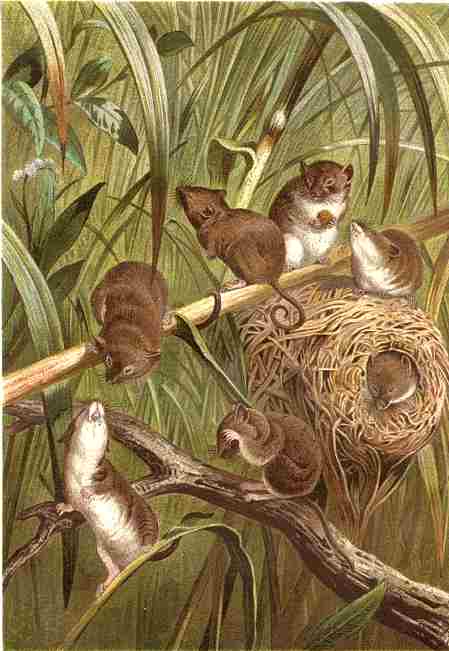
The harvest mouse was a common and occasionally abundant rodent in corn and cerail rich parts of Europe, an illustration from A. Brehm.
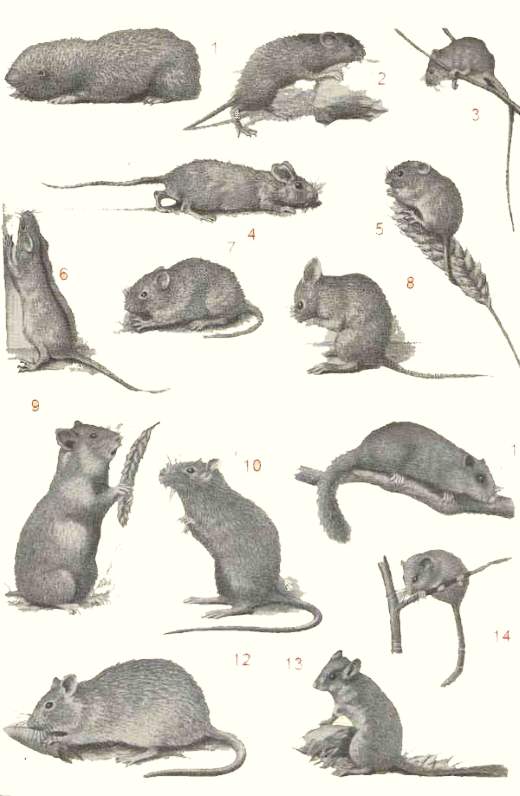
Rodents from the book: "wat is dat voor een dier" 1950.
1 greater mole rat or Spalax microphthalmus
2 common vole or Microtus arvalis
3 Northern Birch Mouse or Sicista betulina
4 woodmouse or Apodemus sylvaticus
5 harvest mouse
6 striped field mouse or Apodemus agrarius
7 bank vole or Myodes glareolus or Clethrionomys glareolus
8 house mouse or Mus musculus
9 European hamster or Cricetus cricetus
10 black rat or Rattus rattus
11 Edible dormouse or Glis glis
12 brown rat, common rat, street rat or Rattus norvegicus
13 garden dormouse or Eliomys quercinus
14 hazel dormouse or common dormouse or Muscardinus avellanarius
